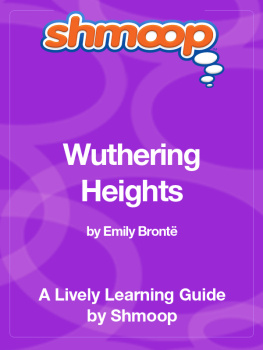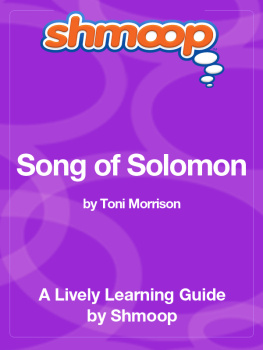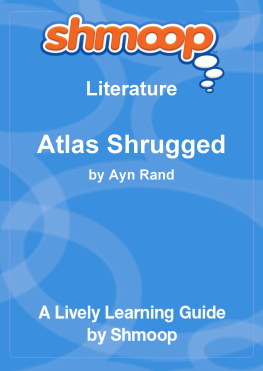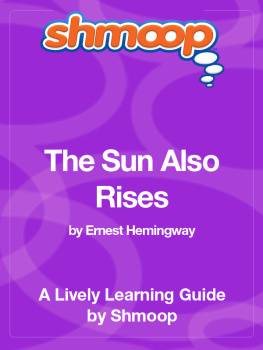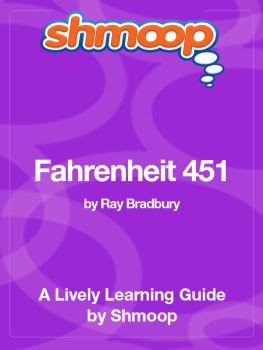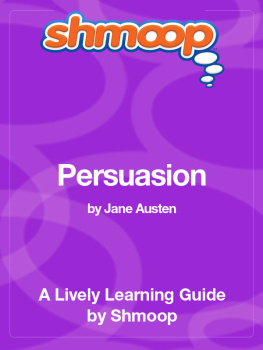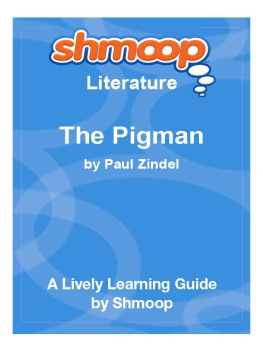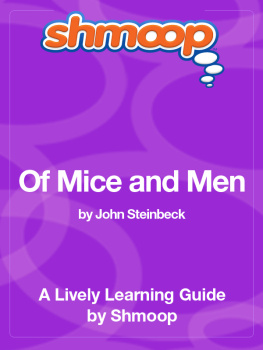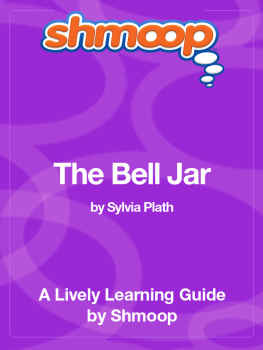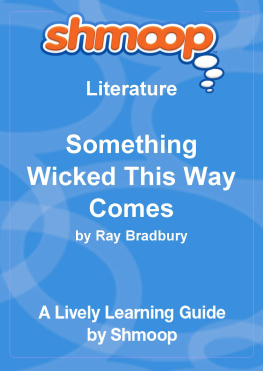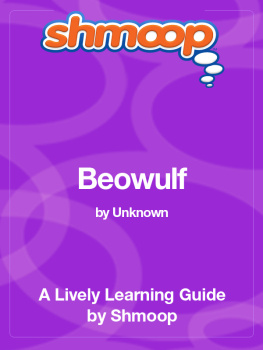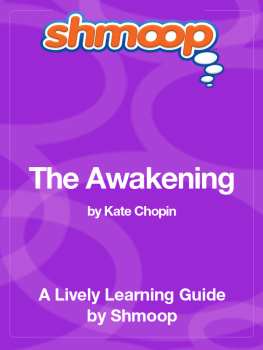
Table of Contents
In a Nutshell/Overview
Published in 1847, Wuthering Heights was the only novel Emily Bront published, and she died the year after it came out. It is the story of Heathcliff, a dark outsider who falls in love with the feisty Catherine and rages and revenges against every obstacle that prevents him from being with her.
Wuthering Heights is violent even by today's standards and is not only full of references to demons, imps of Satan, and ghouls, but also depicts some pretty disturbing scenes of domestic violence. The supernatural plays a large part: ghosts appear, and Heathcliff, characterized more than once as a vampire, refers to drinking blood, haunting, and all manner of paranormal acts. All of this drama means that the book has recently become very popular again with interest in the Twilight saga, whose characters refer to the novel (and are, in some ways, quite similar the characters found in Bront's novel).
Though Wuthering Heights is considered a classic, the book wasn't always so popular. In fact, when it first came out there was all sorts of confusion about the author, because Bront published the book under the pseudonym Ellis Bell. Readers thought the book was by the same author who wrote Jane Eyre - which was more immediately embraced by the public because the characters are a lot more likable. Actually Emily's sister Charlotte wrote Jane Eyre under the pseudonym Currer Bell.
To set the record straight, Charlotte wrote the preface to the 1850 edition of Wuthering Heights and also took the opportunity to address some of the bad press the book had received. Critics basically thought the book was a downer, and some even characterized it as immoral (oh my!). One reviewer wrote that, "Wuthering Heights casts a gloom over the mind not easily to be dispelled." (Read this review and other early reviews of Bront's novel here.) In other words, with all of its spirits and gripping obsessions, Wuthering Heights ends up possessing the reader, too. So be careful!
Numerous movie adaptations have been made of the book. The one in 1939 starring Lawrence Olivier was nominated for an Academy Award for Best Picture. It has also inspired several creative adaptations such as operas, musicals, theatrical adaptations, and even a song by Death Cab for Cutie ("Cath"). Artists love of all the novel's Gothic elements, and the scholarly interpretations are endless. Wuthering Heights appeared after England's craze for Gothic novels had ended, and the book changes all of the rules, taking your standard haunted house performance and turning it into a sinister psychological thriller.
Why Should I Care?
Concerned that you won't like
Wuthering Heights? Think you'll get bored reading a book that's over 150 years old? Before you give up on Emily Bront's one and only novel, ask yourself a couple questions:
- Do you like creepy stories about haunted houses?
- How about stories with elaborate revenge schemes?
- Are you a fan of Edward Cullen, from Twilight? (Because before there was Edward, there was Heathcliff.)
- Do you believe in soul mates?
- Are you sick of reading stories where the girl ends up with a Prince Charming or a Romeo?
If you said yes to any of these questions, we're willing to bet that once you pick up
Wuthering Heights, you won't be able to put it down. It's a real page-turner, full of ghoulish behavior, ghosts, passionate love, and revenge. Maybe you've even heard of the main character, Heathcliff, as a dark, brooding, obsessive romantic idol. This guy is definitely no Prince Charming. Emily Bront changed the tone of the whole romantic hero thing and made Heathcliff nasty and cruel and,
in spite of all that, sexy and sympathetic. One hundred and fifty years later, pop culture is still obsessed with Heathcliff-like characters (Edward Cullen, anyone?).
What's Up With the Title?
Wuthering Heights is a house, and with this novel, Emily Bront takes the whole Gothic haunted house thing several steps further than her predecessors. While the book has all of the Gothic elements made popular the century before by authors such as Ann Radcliffe and Horace Walpole - and even mocked by Jane Austen in Northanger Abby -
Wuthering Heights has a lot more psychological complexity than your average pulp Gothic job. Throughout the story Bront plays on a whole set of genre conventions - Gothic, romantic, pseudo-psychological - and by naming the novel after the house, she sort of announces those influences to her readers. While the house is the main setting for most of the action, its role is so important that it almost seems like a living, breathing, ticked-off character, reflecting the bad attitude of its inhabitants.
Windows and doors are a big deal in the novel, as people and ghosts are always trying to climb in or out, people are always getting locked in and out, doors are slammed, keys hidden, and so forth. Heathcliff often stands in the doorway of Wuthering Heights controlling who crosses the threshold. At the center of the house, symbolically if not literally, is Catherine's oak-paneled bed, which provides the setting for the more uncanny and chilling events: Catherine's ghost fighting to get in against Lockwood's brutal refusal, and the death and discovery of Heathcliff's rain-soaked corpse.
To Heathcliff, whoever controls the house has the power, so even though he seeks revenge for all of his mistreatment, he does so by acquiring real estate. Being accepted into houses means a lot - Hindley never welcomes Heathcliff into Wuthering Heights, but the Lintons open their doors to Catherine (but not Heathcliff). The house has different meanings for each character - prison and punishment, social class, horror, and nostalgia.
The house is loaded with symbolic importance. It's up on the stormy hillside above Thrushcross Grange, which, by comparison, seems like a sort of Eden with its brightly lit salon and expansive garden. Lockwood notices some of the house's strange details from the very beginning - for example, the inscription over the doorway:
Before passing the threshold, I paused to admire a quantity of grotesque carving lavished over the front, and especially about the principal door, above which, among a wilderness of crumbling griffins and shameless little boys, I detected the date "1500," and the name "Hareton Earnshaw." (1.13)
This inscription serves as the house's nametag and informs us that the Earnshaws have been there for a long time (the novel is set in 1801). What Lockwood means by "shameless" we can't really know, but the implication is that the image is Gothic and a little sinister. Emily Bront grew up on the Yorkshire moors, so a lot of critics speculate about the influence the houses in her village of Haworth had on her description of Wuthering Heights.
What's Up With the Ending?
The book is a real page-turner, making you really want to know how it ends. Death? Marriage? Both. With Catherine dying halfway through the novel, finding out what happens to Heathcliff becomes all the more important. The last page of the book has Lockwood leaving Wuthering Heights for Thrushcross Grange, stopping to take one last look at the soon-to-be-married Hareton Earnshaw and Catherine Heathcliff.
Wuthering Heights really shows the difference between "ending" and "closure." Sure the book ends, as does Nelly's narration, and certain threads of the story are neatly tied together: domestic harmony returns to the home, Hareton is able to read his name above the threshold, and his ownership of the house suggests that all is right with property and inheritance. When Nelly picks up the narration one last time, she seeks to provide closure to Heathcliff's story and to the reunification of this generation of Earnshaws. Like a Shakespearean comedy, the story ends with a marriage, as Nelly explains in almost maternal tones: "The crown of all my wishes will be the union of these two; I shall envy no one on their wedding day. There won't be a happier woman than myself in England!" (32.111).

